The ace in online marketing is email.
If you’re not playing this card, your chips are bound to land in your competitor’s stack. In other words, you’ll lose.
I find this little poker lesson falling on deaf ears all too often. I don’t get it. Why must I constantly plead with clients to do email marketing?
Look, a wheelbarrow full of money will get you a 30-second spot on the Super Bowl broadcast. For roughly $4,000,000 less, you can do print advertising or direct mail. Budget even more wisely and you can splash your story all across the web, ramp up your SEO and go crazy on social media.
You have my permission to do any or all of the above, but if you want to communicate directly with people who actually grant you permission to market to them, get in the email game.
You won’t need to employ a team of digital geniuses. You won’t have to play demographic roulette. You’ll need not worry about algorithmic filters. You won’t bother repeating yourself ten times a day.
You’ll hit “send” and your message will be received. This will run you about $29 per month.
Email is today’s most pervasive medium.
Email is more popular than any social media. It’s more private. More personal. More vital. If you ignore email, you risk missing business opportunities. I’d venture to guess you skip breakfast more often than you skip checking your inbox.
If you’re prone to number crunching you’ll discover email trumps social media and search for conversion—in a very big way.
Shall we get on with it now and talk about how to capitalize on email marketing?
You need to build an email list.
Your email list is your online marketing bank account. You want to make it grow. You want to see the interest compound.
You accomplish this by asking the people who visit your site to give you their email address. But it’s not an act of charity. You have to offer them something.
Offer free content
The most effective way to capture email leads is through landing pages. For optimum conversion, your landing pages should have a singular focus.
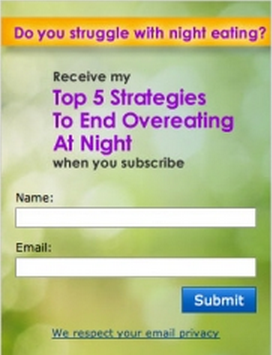
Your landing page should offer a free resource you make downloadable or instantly available online. Of course, to accomplish this, you place an email opt-in form on your landing page. Don’t make it tricky or time-consuming. Request only a name and an email address.
Your best bets for free content offers include:
• Videos
• eBooks
• Podcasts
• Free templates
• Checklists and guides
• Content archives
• A series of informative emails
Invite visitors to subscribe
Your blog is an ideal venue for getting new subscribers, that is, if you set it up to do so. Place opt-in forms in the sidebar of your blog post pages, preferably at the top.
You might also put another opt-in form below each post. I’ve recently begun using this tactic with the Magic Action Box for WordPress. Having an opt-in box below your post makes for a practical and effective call to action. Essentially, the reader has reached a “now what” stage and you make it clear what the answer is: subscribe.
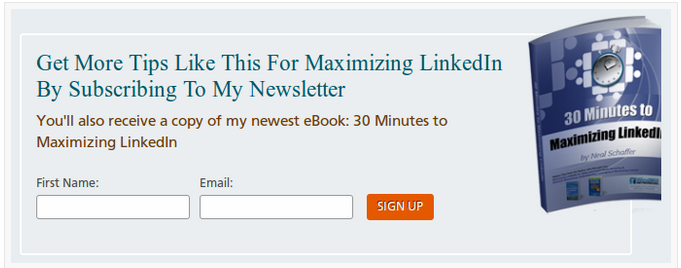
Another effective tactic is to create a dedicated newsletter page. Your page should explain the benefits of subscribing to your newsletter. Use inspiring action words here and you’ll inspire the action you’re after.
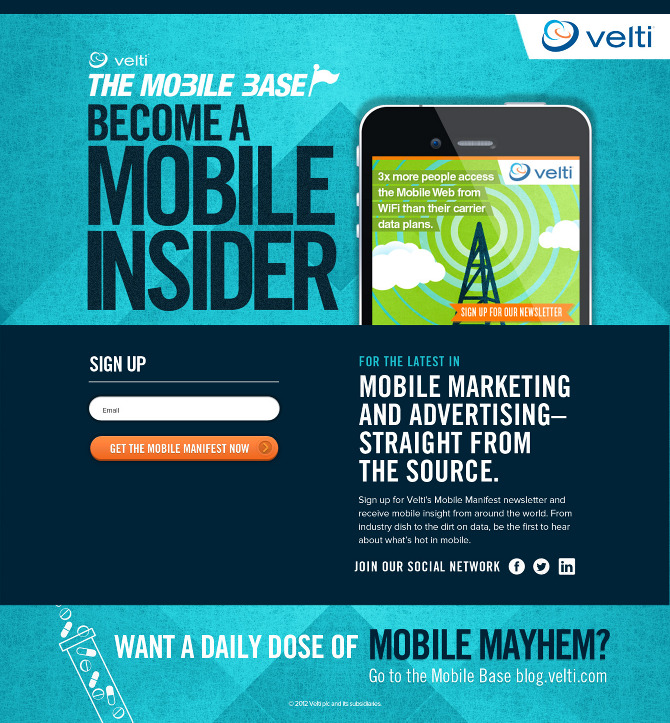
Make emails customers will love.
Having an email list is one thing, but creating a list of loyal and enthusiastic readers is the real goal. Let’s look at how to get readers to open and click the links in your emails.
Curious readers click
The big secret: invoke your reader’s curiosity and compel them to take action.
Neuroscientist George Lowenstein gave us research on the “information gap theory,” which teaches when people encounter things that pique their interest, but don’t reveal “the goods,” they are compelled to delve further.
What do you do with this insight? You create suspense in your enewsletter to inspire readers to follow your lead, your link. That is, to click-through to a page you want them on.
Extreme focus
Overwhelming readers with choices often results in no action. Avoid this phenomenon by sending emails that focus on a desired outcome. Less is more. You may have occasions to offer a variety of links, however, email studies will prove a single or extremely limited number of choices for next steps foster greater results.
Be clear
“Click here to read [blank]” hardly seems like advanced copywriting advice, but clarity and simplicity are your allies in your emails. Avoid the temptation to overwrite. Help the reader help themselves with crystal clear directions.
Use names
Everyone’s favorite word is his or her first name. Readers will be more engaged and trusting of messages in which their name appears. Gather your readers’ names and use them. Your email service makes it extremely easy to do this.
What’s worth emailing?
There are a variety of email marketing types with different purposes. The type of business you have and the way your business is conducted should factor into the choices you make. Some will be more appropriate than others and timing is also a consideration.
Here are some popular email types that have proven useful for online marketers.
Newsletter
The most popular type of email, especially for businesses who consider themselves content marketers, is the enewsletter.
Enewsletters, sent regularly, can be an effective way to maintain mindshare. They are useful for nurturing existing clients as well as engaging prospects. Also, because they usually include links back to your website, enewsletters are effective for creating traffic.
Newsletters are also a very flexible format to serve various objectives. For example, an edition of your newsletter might contain a portion of a blog post, a special offer, an announcement, and a link to a survey.
Digest
Digests tend to be lists created to summarize a collection of information. For example, your email may capture all or most of the content you’ve published in recent weeks. Readers tend to like when you compose digest emails that highlight your most popular or useful content.
I have an email that goes by the name “AEIOU.” The vowels stand for: article, eBook, infographic, online tool and useful tip. Most of the content I include is of the curated variety, that is, it’s been published by a company other than my own. This is definitely a popular format, however, I’ve made mine unique in that each edition addresses one specific topic, such as brand advocacy, LinkedIn, website design, etc.
If you create a lot of content, digests are easy to compose and highly useful for getting extended mileage from your content. If you spend a good deal of time learning about subjects relevant to your audience, it should be easy for you to create digest emails that list valuable resources such as books, eBooks, podcasts, videos, etc.
Offers
You can dedicate an email to be a delivery vehicle about an offer. You may have a product, service, event, or new information asset you want to inform your readers about. Though offer emails are generally sent to everyone on your email database, you may see better response rates by strategically segmenting your list by some type of category.
Generally, your offer emails direct readers to a landing page to gather the details. The extreme focus of an offer email lends itself to tracking and analysis which should help inform subsequent marketing and sales decisions.
Autoresponders
Autoresponders—often called “drip campaigns”—are created for the purpose of lead nurturing. Your prospects are sent a tightly connected series of emails introducing multiple pieces of content over time.
The use of autoresponders addresses a common challenge in email marketing: attention attrition. The non-verbose version simply means interest tends to decline over time. With autoresponders you attempt to strike when the moment’s right.
Email service providers make it easy for you to create autoresponder series and schedule them the way you like (e.g. successive days, weekly, etc.). So the time you invest is entirely up-front and you then “set it and forget it.”
You craft autoresponders to nurture leads in the most targeted way possible. That is, your messages speak to a specific program and thus, focus on a singular conversion goal (sign-up, try, buy). With marketing automation tools, you can advance your autoresponders to nurture leads more effectively with “if” scenarios. The behavior of the recipient (clicked, or didn’t; purchased, or didn’t) dictates the specific email message that will be delivered next.
Transaction emails
Transactional emails are triggered by a specific action contacts take and are usually a fulfillment of a request. Though they most commonly play in the ecommerce space, transactional emails can be a response to a reservation for a webinar registration, a product demo, or even signing up for an email list.
Recipients generally anticipate transactional emails, so the open and click-through rates are high. As a marketer, you can take advantage of this type of email because the recipient has just actively engaged, so it’s wise to provide a specific call-to-action. Research indicates transactional messages help increased revenue and brand recognition.
Rock your open rates.
The following tips will improve your open rates.
Simple subject lines win
For subject lines, clear passages vastly outperform creative ones. People fly through their inbox with their finger on the delete key. Make your subject lines simple and relevant to your subscriber’s interests.
The shorter, the better
Oh how I resisted applying this tip. Of course, a subject line must be brief to begin with. Compose one that exceeds the email client’s allotted space and it simply won’t be seen.
Research indicates super short subjects lines work better. The research is right. I’ve tested it—a lot. I have always been annoyed when told what length a piece of copy should be. But I’m more annoyed when my emails are trashed.
Write short subject lines. If you have a longer gem you feel you have to share with your reader, it might work just fine as the headline in the actual email.
Nix the punctuation
Another subject line guideline: write a phrase. Period. But no period. No exclamation point. No asterisk. They’re bush league and threaten your success. Questions marks are okay.
Perfect your timing
It’s important to time your email deliveries as well as you can. Of course, you’ll need to experiment a bit. In most cases, early morning deliveries perform best. Weekend emails perform better than you probably expect. Get insightful research findings from this great infographic.
Stay away from spam filters
Spam filters work differently, so there are no hard and fast rules, but there are general tips for avoiding them. Keep “free,” “save,” and other financial lures out of your subject line. Do not use cheeseball tricks such as using “Re: or Fwd:” in the subject line.
HubSpot compiled a list of spammy words here. I have no evidence to make a case for what is or isn’t problematic. Just consider your approach. If you’re questioning whether your subject is or isn’t spammy, it is. Reconsider your subject line—or your entire email.
Be a trustworthy sender
The “sender” field is the first to appear in an inbox. Use your name or your company name. No exceptions. No updates@. No reminder @, or anything@ except your name.
Segment subscribers.
A proven way to increase ROI in email marketing is segmenting your email database into groups with specific interests and sending unique messages to each.
Whether your company is big or small—and your lists are big or small—the practice of segmentation is likely to help you succeed in making customers feel you’re tuned into their specific needs.
Creating segments might be simpler than you realize. You could stratify lists simply by those that have and have not bought products from you. Of course, this is just one example and there are many.
Before you begin segmenting, it’s wise to create benchmarks from past campaigns. You might create reports to detail:
• Click-through rate
• Value of sales generated per subscriber
• Average order value
• Open rate
• Unsubscribe rates

Here are some smart segmentation approaches:
Treat new subscribers differently
Great email marketers often roll out the welcome wagon to new subscribers. They recognize the email communications they typically create for established subscribers might not be a perfect fit for new registrants.
Think about the questions and concerns newcomers will have and create a special onboarding track to answer their questions, tell them about the resources you offer, encourage dialogue and possibly even move them further down your sales funnel.
A “welcome” series of automated emails for new subscribers could prove highly beneficial.
Reheat cold contacts
When you join an email list, you’re far more hot-to-trot for reading the emails you’re sent. And often, over time, though you may not unsubscribe, you tune out.
Subscriber fatigue is a challenge for email marketers. Segmentation is a useful response. Send an email asking these subscribers how you can better help them.
Give responsive subscribers special treatment
Your most responsive subscribers may want more email from you. Send them email to reward or thank them. A special “thanks” promotion might increase engagement or sales. Consider giving loyal readers early access to new products, events, and content.
Break ‘em up
You could simply create recipient list segments by areas of interest. If your business has “interest groups,” say for example, by gender-specific products or price points, you’re bound to create a far more satisfying experience for your readers by treating them more personally.
Understand email metrics.
As I mentioned earlier, email offers the tremendous advantage of being thoroughly measurable. By assessing the performance of specific sends, email series, and campaigns, you can establish benchmarks and continuously refine and improve your tactics.
Basic email metrics to consider include:
-
- Bounce rate. This is the percentage of undeliverable emails. “Hard bounces,” those not caused by a temporary technical glitch, indicate the email was sent to an address that is not valid. You’ll want to delete the recipients’ email addresses from your list. And, if the problem appears to be consistent and significant, you’ll want to re-assess your opt–in process because you’re collecting bogus emails that have no value.
-
- Delivery rate. This is the inverse of your bounce rate, a measure of the emails that arrived as planned. When a delivery rate is uncharacteristically low, it’s a pretty sure bet your message was flagged as spam, which is obviously something you’ll want to revisit.
-
- List growth. You may have to do the math here. Take your delivery rate from each month and divide by the number of email addresses you had to begin with. You want to understand this percentage to (1) tackle delivery issues (email addresses going bad at a high rate) and (2) track the growth of your list.
-
- Click-through rate (CTR). If your email aims to get clicks, this is your most important metric. CTRs suggest how relevant and compelling your email was, or wasn’t. Serious email marketers never lose sight of CTR and try hard to trace the reasons why some are higher or lower than average.
-
- Conversion rate. A step beyond click-through, conversion indicates the recipient performed a desired action such as filling out a form or buying a product. Measuring conversion requires integrating your email platform with your web analytics. Of course you can live without this metric, but if your email aims to sell, you should take conversion rate seriously.
-
- Open rate. The percentage of recipients that open your email is meaningful, but for technical reasons, a bit elusive, and therefore unreliable. However, as means of comparison from email to email, your open rate is an indicator of the success of your subject line, so it should never be ignored.
-
- Unsubscribes. You shouldn’t be overly alarmed by a small percentage of unsubscribes because the goal is to send email to those that really want it. However, if you find a sudden spike in this rate it suggests there is an issue. You may be sending email too often or somehow not meeting the expectations of your subscribers.
Test and refine your email tactics.
Email is easy to test. Doing so will give you valuable insights into your prospects’ behavior and preferences and help you perpetually improve results.
It’s easy to test your email in a variety of ways, so there’s no excuse to not do some testing. Your email marketing service should offer features to facilitate simple A/B tests (often called “split tests”).
Subject line split tests
My first piece of advice is to look into whether or not your email service provider offers an easy A/B testing feature for subject lines. If they don’t, my second piece of advice is to move on to one who does. It’s that valuable.
My email service provider is Campaign Monitor, which I chose because their templates looked sweet and I stick with the service because it’s the best I’ve tried. Not surprisingly, they offer the best tool for testing as well as the best A/B testing tips. (I’ve found support and advice from other email providers to be far inferior, but can’t say I’ve tried them all.)
Timing
If your subscribers are in all kinds of different businesses and located around the world, you may find there’s no perfect time for sending the same email to everyone on your list. Even so, testing time-of-day delivery for a few emails is likely to be a worthwhile exercise to help you determine the time of day that provides higher open rates.
Day of the week
It’s also smart to experiment with the day or days you send emails. You may find a significant difference in response rates when you compare early, mid, late-week and weekend deliveries.
Copy
The success of your email marketing will be tied to the written content it contains. When you have different ideas about what to write, split-testing versions of the copy will help you determine which style or message resonates best with your readers.
Structure and layout
In the early goings of your email marketing campaigns you’ll want to consider testing what information is presented and how. Variations in terms of how the email is laid-out are test-worthy.
Design
You won’t know what visual style inspires clicks until you try a few. Consider testing masthead designs, number of columns, lengths, images, color schemes, fonts, and styles.
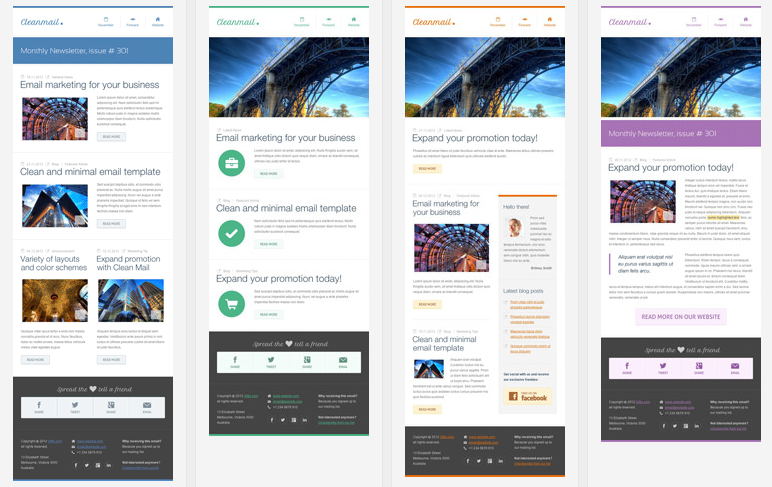
Personalization
Email experts preach personalization, but it may or may not improve your results. Test similar emails that do and don’t contain the recipients’ names to see which performs better.
Call to action (CTA)
You’ll also benefit from testing your call to actions: what they are, how they look, how many to include, how often they are presented, etc. An especially test-worthy variable is where the CTA is located… at the end, beginning, both, in a sidebar?
Offers
If you do direct response email, you’re likely to have an assortment of ideas regarding offers: free trials, discounts, multi-product kits, bonuses and various incentives. Investing the time to test offers with a sample of your email database, could have a significant affect on the return you do or don’t realize.
Four email no-no’s.
In effort to save you time, money and humiliation, I’ll leave you with a list of mistakes email rookies make. Recognize them. Be sure not to repeat them. And then, go take advantage of email marketing, the most powerful form of marketing available to you in the digital age.
No-no number 1: SPAM.
Email marketing is for sending messages to people who told you they want them. There are no exceptions under any condition. You need permission from every recipient otherwise what you’re sending is SPAM, which may not be against the law, but is unethical and a complete waste of time.
Vendors continue to sell email lists. They’ll tell you the lists are valuable. Only suckers fall for it.
No-no number 2: Talking trash.
The low prices and easy entry into email marketing inspires many businesses to have a hack at it. They send obnoxious hard-sell messages. Most will be filtered.
The ones that get through will simply tarnish your credibility.
No-no number 3: Not testing.
HTML emails look different to viewers. Though your email may look good in your preview window, it may not in your recipient’s. Your email should be tested across the popular email services and client software types.
No-no number 4: Ignoring the data.
A ton of email marketers never look at their reports. They fail to notice open rates have slipped, their list is shrinking, or their emails are bouncing and getting marked as SPAM. You need to check your email statistics after every send.
Don’t forget…
Email is the purest form of permission marketing and the most effective way to boost your bottom line and grow your business. It’s the only channel of online communication that remains private and provides a direct connection to your prospect.
Review the email tactics and techniques offered in this paper and win big with the ace of online marketing.
Wow. You made it to the end of an extremely long post. Good for you. You’re interested in learning more about email marketing. Please use the comment area below to ask questions or contact me if you’d like help with your email marketing.

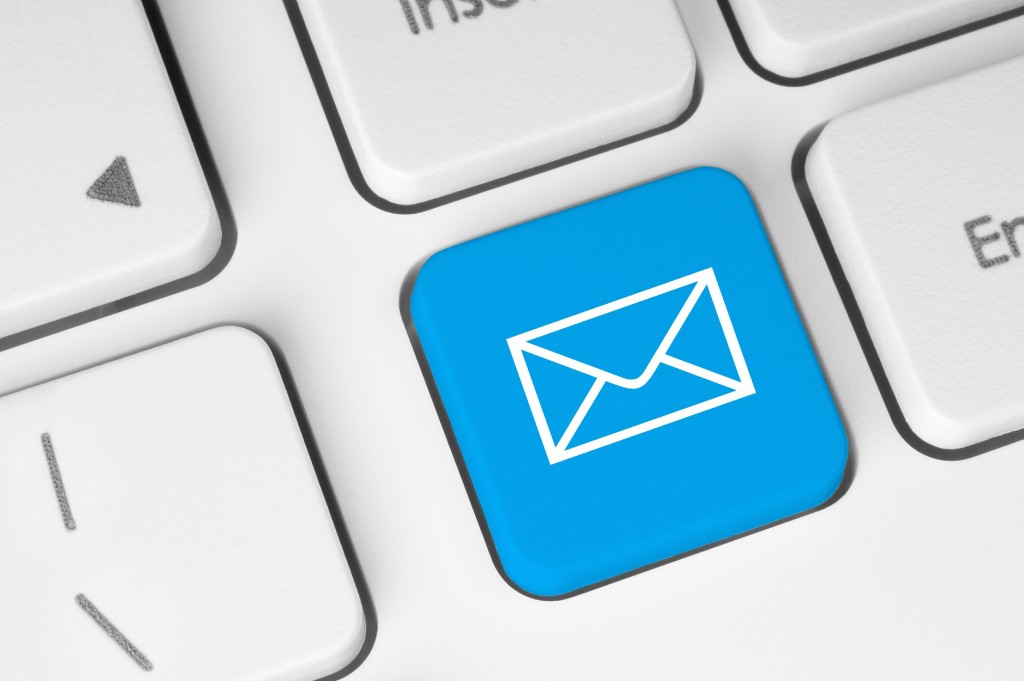

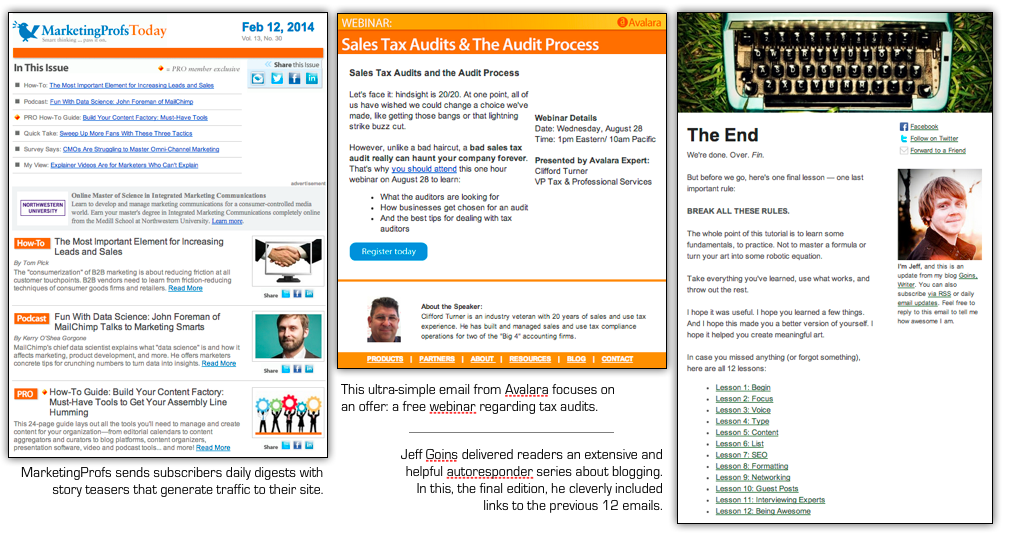
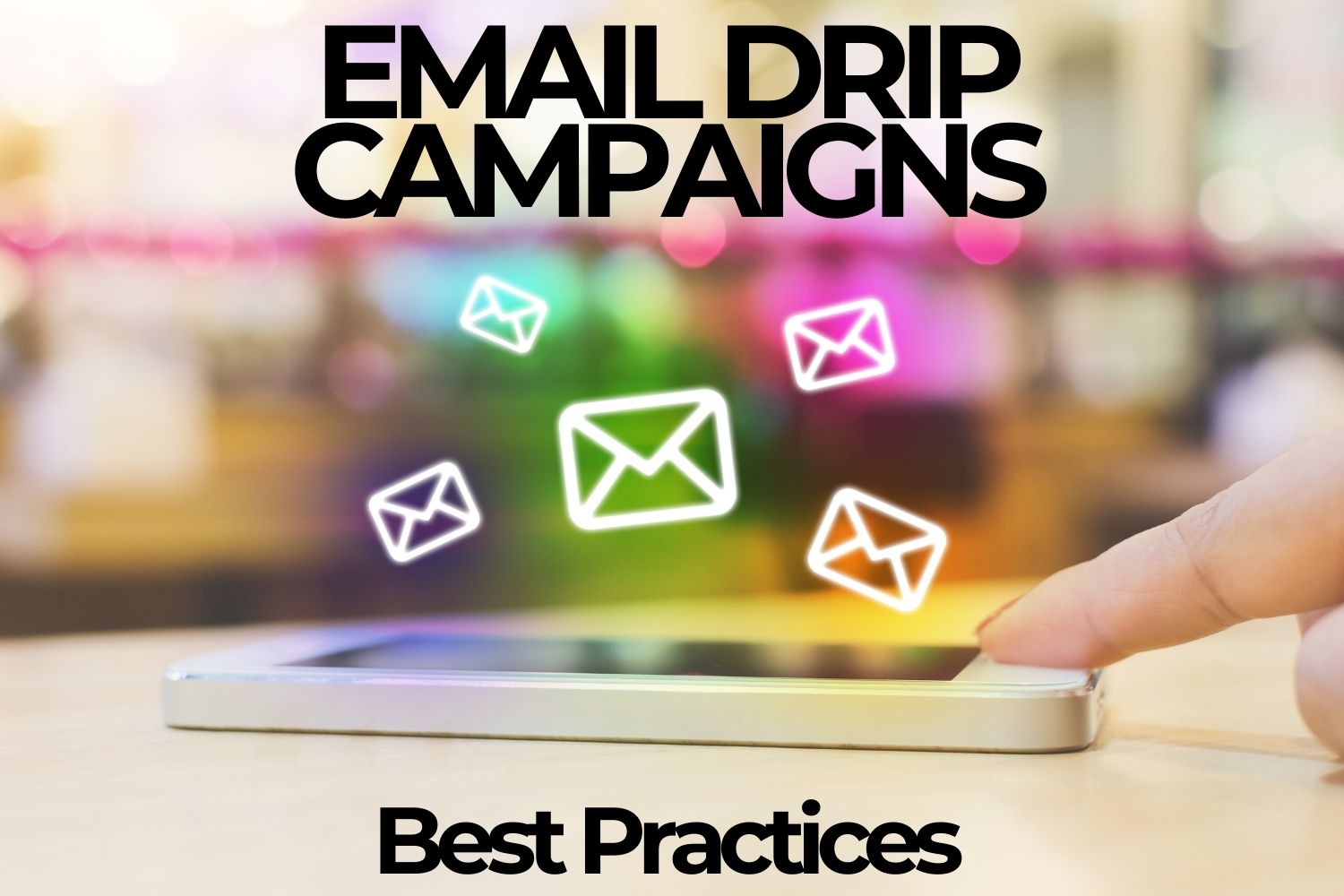


![How to Create and Use Welcome Emails [Content Jam Episode 34] How to Create and Use Welcome Emails [Content Jam Episode 34]](https://feldmancreative.com/wp-content/uploads/2018/08/Content-Jam-podcast-34.jpg)
Comments
Stephen Lahey
Excellent post – email can be such a powerful tool. I especially agree that testing and paying close attention to the reports is essential.
Barry Feldman
Ah, the analytical type. As is it turns out, we have a corner office for guys like you here at Internet Marketing Enterprises 😉
Thanks Stephen.
Kim Elisa Prario
Barry, this is the most comprehensive post I’ve seen on email marketing! That said, you had me at “You need to build an email list.” The key word here being “build”– not “buy.” Because we get good returns from our email marketing, I’m often asked to purchase lists. I finally had to, and in spite of a very respectable open rate, our return was zilch. (Take heed, readers. It takes work to build a good list of prospects and contacts.) I like the idea of segmenting– going to do that with my next email campaign, thanks to you!
Barry Feldman
I forget what movie we’re quoting. Jerry McGuire?
Thanks for the comment Kim. I hope you saved someone somewhere some money (and heartache). Buying email lists is a terrible waste. Never been proven wrong on that one.
Brian Loebig
You are my new email marketing idol. 🙂
Seth Price
Barry, awesome post. Just shared it with my tribe. Keep up the great work. The only thing I would say is regarding design. Responsive is key but sometimes the fancy HTML designs are less effective, it depends on your audience. For quite a while I switch to an all text version that increased my open rate and my direct reply rate. The number of folks that replied to me as if I had written the email to them personally. Now I am using an all text HTML version that looks cleaner but still looks like I hand typed it. Love your work my friend.
Philip Price
Just seen this , really good with practical and achievable steps. Regarding email marketing, what if you are a start up and are yet to get traffic to your site, can you create an email list through social or other channels ? I know you can buy lists but Ive rarely seen these be effective.
25 Growth Hacks Your Content Marketing Desperately Needs
[…] writer Barry Feldman recently wrote an email marketing mega-post on the entire subject that covers it from top to bottom, but the easy summation of it is this: […]
Effective Email Marketing Strategy: Insights from an Expert | Drip Logic
[…] Here’s an in-depth post covering the ins and outs of nailing effective email marketing. […]
Effective Email Marketing Strategy: Insights from an Expert | Feldman Creative
[…] Here’s an in-depth post covering the ins and outs of nailing effective email marketing. […]
100 Ways Your Company Loses to Better Online Marketers | Feldman Creative
[…] marketers know email is the best tool for moving customers forward in the buying process. If you allow your competition […]
Peter
Awesome post! The tips are really great and useful. What software would you recommend? I was thinking about GetResponse.
Barry Feldman
I believe GetResponse should serve you well though I haven’t used it. I’ve been with Campaign Monitor for years and really love their service.